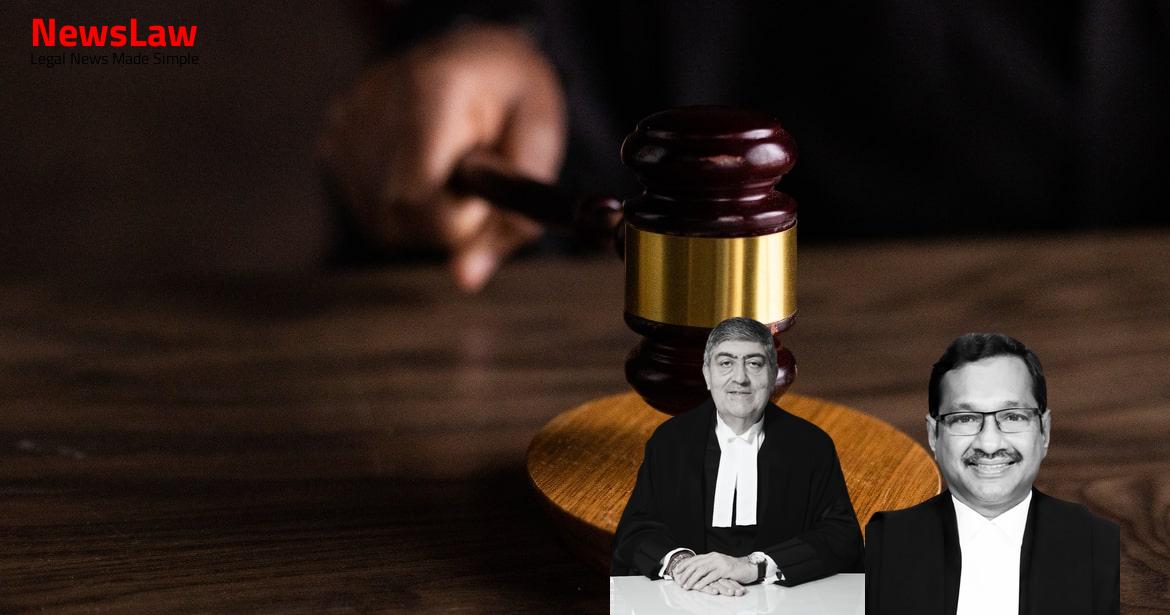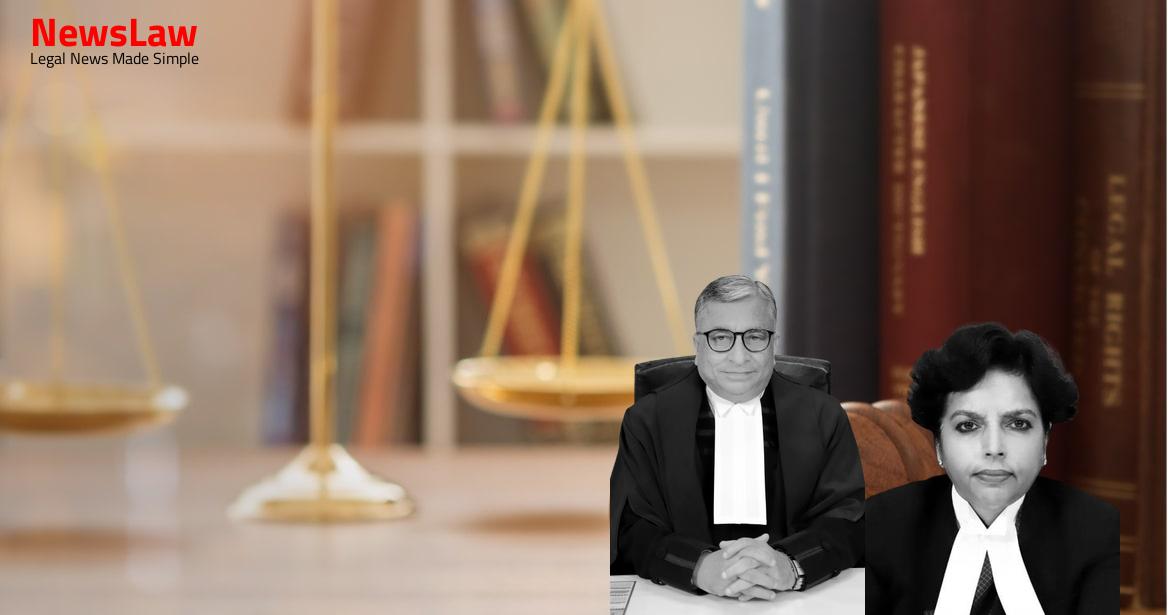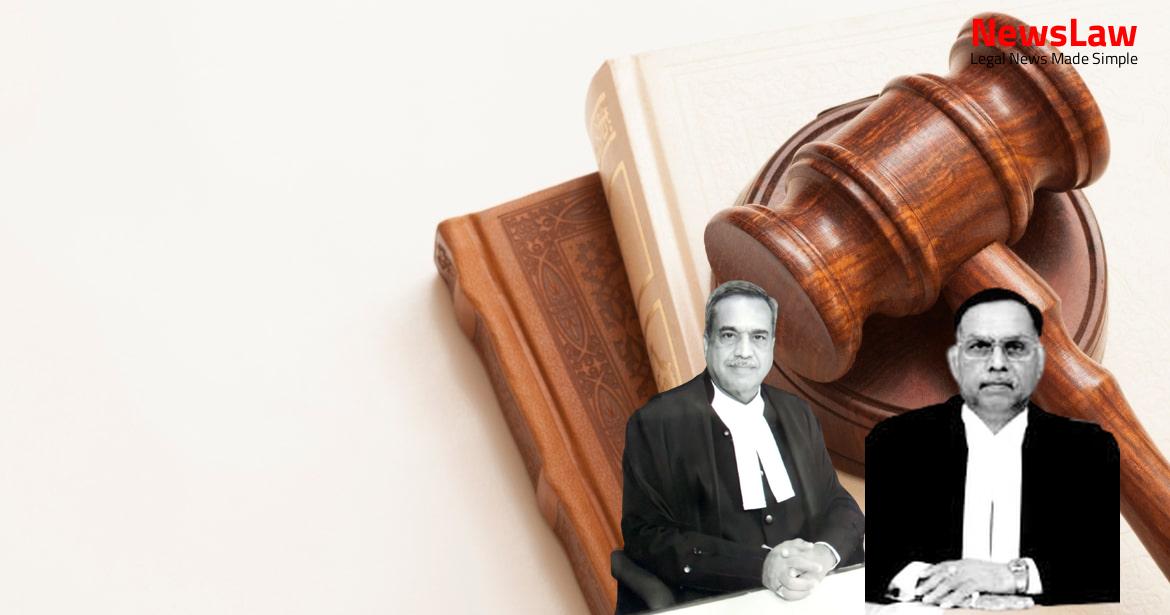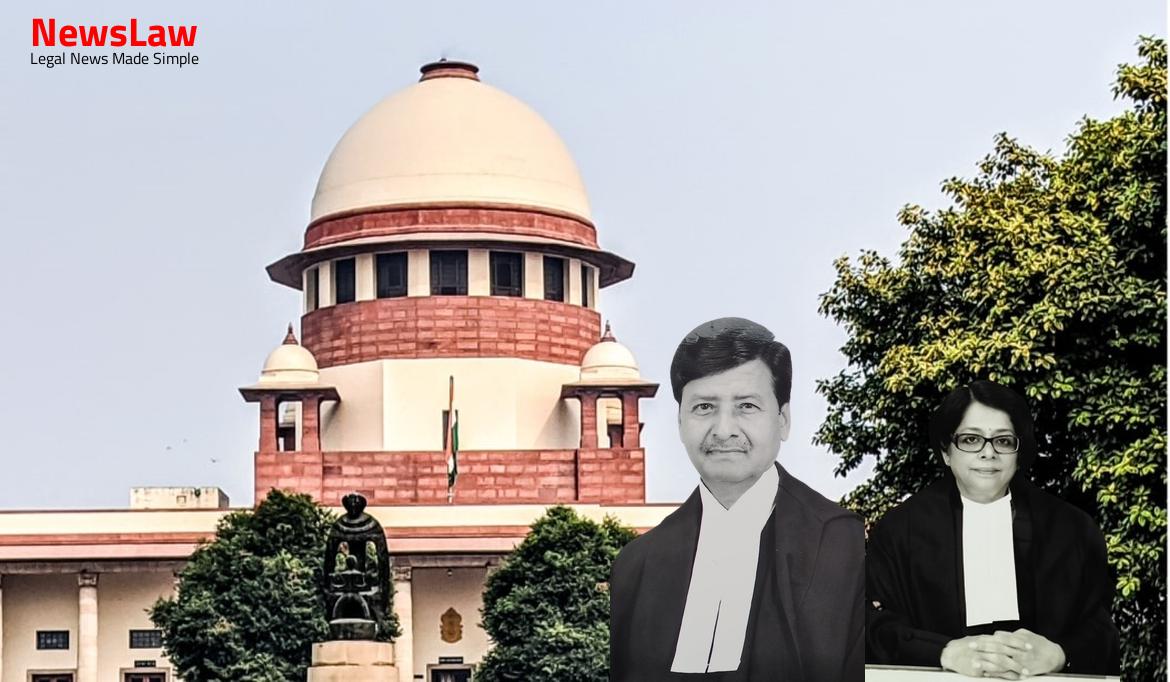Delve into the intricate legal analysis conducted by the court in a notable case where a conviction was reversed. The focus lies on the thorough examination of evidence, contradictions in witness statements, and the implications of prosecutorial reliance on particular testimonies. The court’s meticulous review of the trial court’s decision sheds light on the complexities of appellate jurisprudence and the importance of upholding the presumption of innocence. This summary highlights the essence of legal reasoning in the judicial process.
Facts
- The High Court ought not have made reliance upon Ex. P38 – P41.
- There was an admitted contradiction between the statement given by PW-2 before the Court and in his Section 161 CrPC statement as acknowledged by PW-28.
- Most of the witnesses pertaining to conspiracy, occurrence, recovery and extraordinary judicial confession turned hostile.
- After due scrutiny, benefit of doubt was extended in favour of the appellants.
- The State took the case on appeal before the High Court.
- The High Court did not consider the entire evidence as discussed by the trial court.
- The Court of Sessions without exception, threadbare considered all the materials including the witnesses who turned hostile.
- He did not accompany the deceased, as reiterated by PW-2 being contradictory to that of Ex. P-41 read with the evidence of PW-25.
- Nonetheless, it reversed the order of acquittal on the following grounds: The Trial Court had no idea of the concept of dying declaration and the principle governing it.
- The testimony of PWs 3, 4 and 5 ought to be read in unison and in conjunction with each other to come to an inference of motive.
- He did not use his wireless radio nor make any attempt immediately to give a complaint.
- Accordingly, the judgment of the trial court was reversed and conviction was rendered sentencing the appellants for life.
- Even the occurrence has been spoken differently by PW-1 and PW-2.
- The testimony of PWs 1, 2 and 25 ought to have been accepted.
- The High Court straightaway came to the conclusion that PW-28 was supporting the accused, as all of them are the police officers known to each other.
- The contradictions between the testimony of PW-2 and the statement under Section 161 CrPC, would only mean that the investigating officer was leaning towards the accused.
- The medical evidence along with the documents marked clearly point out the guilt towards the accused.
- The fact that the witnesses turned hostile including the panch witness who signed the recovery memos would not be fatal to the case of the prosecution.
- It is inexplicable that the deceased would be taken to the hospital 2 kilometers away, while leaving the one on the road just about 50 meters away, especially taking note of the serious condition of the deceased.
- The trial court has considered the evidence thoroughly.
- The recovery shown also belies the case as put up by PW-2 with respect to an attempt to attack him by throwing one of the material objects at him.
- A well-merited judgment of the Court of Sessions acquitting two young men accused of murdering a police officer, was overturned by the High Court convicting them for life.
- It is further submitted that PW-2’s evidence was rightly disbelieved by the trial court in view of the contradictions in the evidence adduced by him and PW-1, and also PW-16.
- He also did not give a complaint despite being a police officer.
- It found that PW-1 could not have been a chance witness and there are many discrepancies in his evidence and the testimony of PW-2.
- The High Court ought not to have reversed the decision on the basis of a so-called dying declaration.
- The trial court rightly noted that it would be unsafe to rely upon the evidence of PW-1 and PW-2.
- PW-25 provided a certificate indicating a dying declaration at the request of the police.
- PW-1 gave an oral complaint at the police station which was not registered.
- Defence presented a doctor to suggest death must have been instantaneous due to the nature of injuries.
- PW-25 treated the deceased before his death from multiple injuries.
- Conflict in statements by PW-1 and PW-2 regarding the location of the incident.
- PW-1 chased the accused but could not apprehend them.
- Deceased suffered severe injuries, with intestines coming out.
- PW-1 and PW-2, both from the traffic department, witnessed the incident.
- Certain witnesses’ Section 161 statements were used to contradict their court testimonies.
- Both accused attacked the deceased with multiple weapons on a main road at 5 p.m.
- Material objects presented as evidence, including weapons and other items.
- Deceased was placed in an auto by PW-1 and PW-2 for transport to the hospital.
- Complaints and actions taken by PW-1 and others involved in the case.
- Investigating officer PW-28 registered the complaint and filed the final report.
- Relationships between witnesses, the deceased, and the accused.
- Events leading up to the incident and actions taken by individuals involved.
Also Read: Supreme Court Judgment on Single Till Mechanism for HRAB Calculation: A Comprehensive Analysis
Arguments
- PW-1’s presence on the day of the incident is questioned by the counsel for the appellants.
- The counsel argues that PW-1 had a grudge against the accused.
- Counsel refers to several cases to support the argument that evidence of chance witnesses, like PW-1, may be questionable.
- Cases cited include Jayamma & Anr. vs State of Karnataka, Paparambaka Rosamma & Ors. vs State of A.P., Surinder Kumar vs State of Haryana, Chandrappa vs State of Karnataka, Rajendra Prasad vs State of Bihar, and others.
- The learned counsel for the appellant argued that the trial court’s acquittal judgment should not have been set aside by the High Court unless it was found to be perverse.
- The High Court’s decision to overturn the trial court’s judgment was based on the appreciation of prosecution evidence.
- The argument emphasizes the need for the High Court to have a strong justification, such as perversity, to interfere with the trial court’s acquittal.
Analysis
- The evidence of PW-25 did not contain any dying declaration.
- Exhibit P-38 mentioned the accused but did not include any statement by the deceased about the accused.
- The witness PW-25 mentioned giving Ex. P-41 under police persistence, without knowing its accuracy.
- The trial court thoroughly analyzed the evidence of all witnesses, including distance between work and residence.
- The alleged occurrence was on a busy road with many witnesses, suggesting the presence of about 1000 persons.
- The witness had a personal conflict with the accused, creating bias.
- The appellate court should approach cases of acquittal with caution and avoid subjectivity.
- Different courts had differing decisions on the same case, showcasing the need for careful review.
- A conclusion of conviction cannot solely rely on inference when witness testimony is not deemed credible.
- Importance of following the trial court’s decision in cases of acquittal due to the presumption of innocence.
- The High Court’s reversal of acquittal lacked adequate discussion on the trial court’s reasoning.
- The importance of evidence evaluation and credibility in determining guilt.
- Contradictions between witness statements and lack of reliable testimony led to the non-acceptance of a dying declaration.
- The High Court’s conclusions did not adequately consider the trial court’s reasoning for acquittal.
- The appellate court should uphold the presumption of innocence in appeals against acquittal.
- The High Court declined to interfere with the order of conviction passed by the High Court, as it found the order of acquittal by the trial court to be perverse and suffering from infirmities.
- The concept of ‘perverse findings of fact’ was discussed, noting that such findings can result from ignoring relevant material, considering irrelevant material, or defying logic outrageously.
- The judgment emphasized the importance of evidence in reaching conclusions, stating that conclusions based on no evidence or unreliable evidence can be deemed perverse.
- The evaluation of evidence by the trial court was scrutinized, and the High Court was found to be justified in reevaluating the evidence independently to arrive at its own conclusion.
- Cases of K. Ramakrishnan Unnithan and Atley were cited to emphasize the judiciary’s role in correcting manifestly erroneous judgments made by lower courts.
- The hierarchy of the judicial system was discussed, highlighting the High Court’s power to review and reverse decisions based on improper evaluation of evidence by lower courts.
- In a case involving an appeal against an order of acquittal, the court discussed the importance of High Court’s reevaluation of evidence before reversing an order of acquittal.
- The court referenced previous cases to illustrate the significance of High Court’s role in reviewing and reversing lower court judgments based on erroneous evaluation of evidence.
- High Court did not follow the requirements of Section 378 and Section 384 CrPC in reversing the trial court’s decision
- Only the evidence of PW-1 and PW-2 was relied upon by the prosecution
- Absence of corroborative evidence to support the prosecution’s case
Also Read: Selection and Appointment of Judicial Officers in Himachal Pradesh
Decision
- Appeals allowed
- Orders of conviction by High Court set aside
Case Title: MOHAN @SRINIVAS@ SEENA @TAILOR SEENA Vs. THE STATE OF KARNATAKA (2021 INSC 879)
Case Number: Crl.A. No.-001420-001420 / 2014



